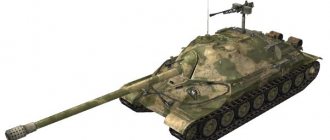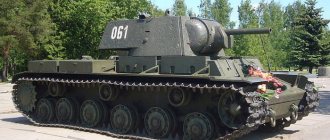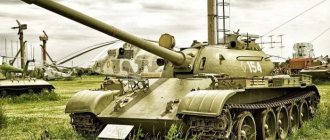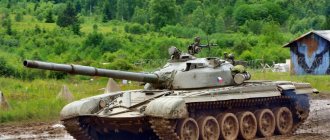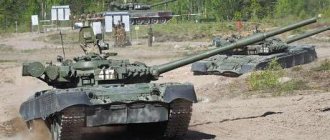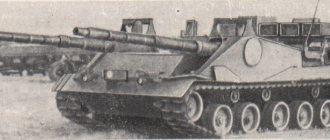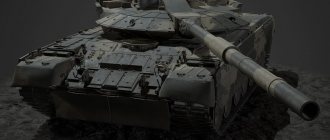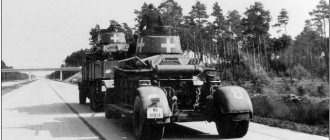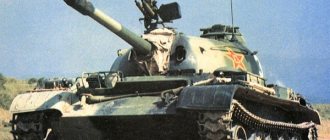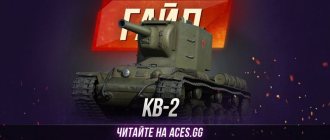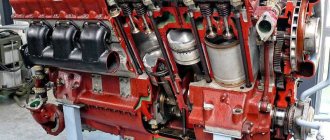Wheeled-tracked tank T-25
The laurels of tank builders that the Leningraders and Kharkovites reaped before the war did not give rest to the designers of the Stalingrad Tractor Plant, who, instead of promoting the development of the production of T-26 and T-46 tanks, constantly since 1937 gave birth to “revolutionary” projects of various types of armored vehicles , each of which was, as they say, “with a claim.”
The laurels of tank builders that the Leningraders and Kharkovites reaped before the war did not give rest to the designers of the Stalingrad Tractor Plant, who, instead of promoting the development of the production of T-26 and T-46 tanks, constantly since 1937 gave birth to “revolutionary” projects of various types of armored vehicles , each of which was, as they say, “with a claim.” There were linear tanks, artillery tractors, self-propelled artillery mounts, repair vehicles, etc.
Tank T-25. Side view
increasingly appeared on documents describing these projects, which fell on the table of the technical department of ABTU. Most of these projects were never implemented. There are many reasons for this, but in the documents remaining after the discussion of these “projects of the century”, as a rule, the low-tech design, high price and even “impossibility of construction” appear. Nevertheless, some were nevertheless implemented “in metal”.
The project in question was an attempt by its creators to “radically improve the characteristics of an escort tank,” which was the T-26 at that time. At the same time, following recent fashion, the new tank was supposed to be wheeled and tracked, incorporating all the advantages of a double propulsion system. The project, submitted in 1937, was subjected to fair criticism already at the stage of its consideration. In fact, was it possible, having retained the engine and gearbox of the T-26 tank, to significantly strengthen its armor and increase its speed, and also equip it with a double propulsion system? But a little later they returned to the project. The reason for this was, most likely, the conclusion about the lack of reserves for modernizing the T-26 tank, made at the beginning of the year.
Development of the new tank “SP tank arr. 1936”, designed by S. Ginzburg, required the restructuring of tank production, but the Stalingraders agreed to give the army a new tank from the existing one, and therefore ABTU gave the plant a chance. The tank had the factory designation STZ-24 and was designed quite quickly. It inherited the engine, gearbox, conical turret with weapons, rear hull and a number of transmission elements from the T-26 produced in 1938. But the front of the tank was radically changed. In the frontal part, it received an upper inclined sheet 16 mm thick, and a lower one 24 mm thick. True, this did not correspond to the promises of the design bureau (30 mm according to the preliminary design). But the sides and rear of the tank were protected in accordance with the sketch - 20 mm.
However, armor was not the main trump card of the Stalingraders. The object of their closest attention was the chassis, the innovation of which was the suspension - a candle balancer, located outside the armored hull. Large-diameter track rollers with rubber tires were intended for movement both on tracks and without them. The transmission, due to the double propulsion, was solved so unusually that it deserves separate consideration. When driving on tracks, the drive wheel, as in the T-26, was located in front and the drive to it was carried out through the main clutch, gearbox, driveshaft, range, gearbox, final drive, final clutches and final drives. When moving on wheels, the drive on them was carried out by an open sprocket on the cams of the road wheels in pairs, which made it possible to carry out some synchronization of them. In this case, additional gears were included in the transmission after the final drives, which were connected through a bevel pair and cardan shafts to additional onboard wheel drive boxes. The peculiarity of this design was that when driving on wheels, either two front pairs of road wheels or two rear ones could be driving, and if it was necessary to significantly increase cross-country ability, it was recommended to drive all rollers at once. However, changing the direction of movement of the tank when moving on wheels was carried out “in a caterpillar manner” - by braking the rollers on one side, which undoubtedly worsened the maneuverability of the tank. The guide wheels (sloths) were stamped, and the drive wheels consisted of a cast base, to which a ring gear was bolted. The tank's track chain was slightly wider and lighter compared to the T-26.
Wheeled-tracked tank T-25. Front view
Control devices and control devices were also borrowed from the T-26 tank. For testing at the NIBT test site, the tank, which received the military designation T-25, arrived in September 1939. Since the new tank carried the same engine with a greater mass than its progenitor, its dynamic characteristics were obviously lower than those of the T-26 tank, and therefore the main purpose of the tests was “to check the correctness and reliability of the operation of individual components of the tank.”
The maximum speed achieved during testing was 27.5–27.9 km/h, with technical speed up to 13 km/h, and operational speed no more than 8–10 km/h. During the tests carried out on the route st. Kubinka - Repishche - Naro-Krutitsa - Naro-Osanovo - Dorokhovo and back, the tank moving along the crushed stone highway broke down countless times. When turning on soft ground, the caterpillar often flew off.
Its weakest components were: track tracks, track fingers, the tightness of the gearbox and final drives, fastening the gas line to the carburetor, wheel rims, balancers (the tank was equipped with cast tracks and unreinforced track fingers produced by STZ). In addition, foreign objects (stones, wire scraps, etc.) often got into the teeth of the drive sprocket on the wheels, which led to breakage of the cams on the wheel disks or jamming of the drive. When trying to drive on wheels, the drive jammed after only 4 km.
And when leaving the highway, the tank got stuck almost instantly (the transfer gear was clogged with dirt). The impression of the tank was also aggravated by the rather large pitching of the hull, which did not allow firing from it while moving. The conclusions from the test results were categorical: “The T-25 tank does not meet the requirements of the Red Army and in its existing form is absolutely unsuitable for adoption.” There was no sensation. An attempt by the STZ design bureau to correct the shortcomings of the T-25 in the STZ-35 vehicle was unsuccessful, even despite the abandonment of the wheel drive.
T-25 wheeled-tracked tank undergoing testing
Source: Svirin M.N. Tanks of the Stalin era. Super encyclopedia. "Golden era of Soviet tank building." – M., 2012.
TTX T25 Pilot Number 1
First of all, I note that we have the usual safety margin for a car of this level and nation, as well as a very good basic visibility of 390 meters, like most Americans.
If you look at the T 25 Pilot Number 1 characteristics
armor, there is a noticeable parallel with the T23E3, we have no armor at all. We are vulnerable from any side, both the tower and the hull are equally soft, so everyone we meet will penetrate us. The only exceptions will be occasional unsuccessful shots from the smallest guns, and perhaps our gun mantlet will sometimes hold something, because this element in the tank is always unpredictable.
Things are better with mobility. T25 Pilot 1 World of Tanks
endowed with good maximum speed forward and backward, but the engine power is slightly too low, which does not promise the best dynamics. However, there is one nuance here - good cross-country ability, thanks to which this unit will still move very vigorously and with good maneuverability, it will even be able to spin particularly clumsy opponents.
Research and leveling
The T25T2 chassis does not provide anything other than load capacity; all modules can be installed just fine without it. Installation of the chassis is required only for equipment installation. If you are not going to stay with this tank, then you should not spend money on a new chassis. If you will be using the tank for a long time, then the T25T2 chassis should be number one on the research list. Learned for 9,025 experience units.
Then we study the Continental AV-1790-1 engine and the 90 mm AT Gun T15E2 cannon for 10,500 and 16,300 experience, respectively. Where to start is a matter of taste. If the T25 AT is a step on the way up, there is no need to study the engine at all.
The latest in the study is the top gun 105 mm AT Gun T5E1 for 41,000 experience. And you will have to study it in any case. It is better to gain experience on a pre-top Tier VII tank destroyer than to study the same thing, but at Tier VIII.
The radio station SCR 506 should have been studied at level II. If this has not been done, then it will need to be studied for 5,600 experience. For the pass-through version of this PT this is not mandatory.
gun
Now let's turn our attention to the most important part of any tank - its weapons, and I want to say right away that in our case everything is very good. Well, you won’t surprise anyone with an alphastrike, many level eight premiums have exactly the same one, but the armor penetration of the T 25 Pilot Number 1 gun
They gave us a pretty good one, which will allow us to farm and not feel deprived without gold shells.
Our gun has a good rate of fire, which allows it to inflict approximately 1850 damage per minute, and this does not take into account equipment and crew perks, a decent result.
In terms of accuracy, the American tank T 25 1 WoT
It’s also pleasantly surprising, because our dispersion is small, the gun is aimed quickly, and good stabilization only reinforces these characteristics. By the way, the gun has comfortable vertical aiming angles (-10 and +25), which is good news.
Equipment for T 25 Pilot Number 1
Considering all of the above, a reasonable solution would be to highlight our strengths and, if possible, correct our shortcomings, of which there are few. Thus, on the T 25 Pilot Number 1 equipment
The following is set: 1. – allows you to increase the rate of fire and damage per minute, which may be more important. 2. – we already have good accuracy and stabilization, it wouldn’t hurt to improve these parameters. 3. is a great way to increase an already good overview of mobile equipment, the choice is obvious.
A good alternative to the last point, especially if you have a pumped-up crew, would be, which will boost very important parameters and make us an even more dangerous enemy.
Historical reference
We have only received information that this T25 tank destroyer was designed on the basis of the ST - T20 (T23), but work stalled at the pre-design stage. There is only one diagram, preserved in the sources, showing only in general terms what the T25 AT should have looked like in reality.
At the beginning of 1943, the technical department made a proposal to place 90mm. gun on T23 chassis. The general diagram was shown in March 1943. These ideas became the basis for the development of the T25 and T26 tanks.
Crew
The T25 AT has 4 crew members: commander, gunner, driver and loader. And there are no minor characters here. But if you need to train someone, and finance sings romances for everyone, then you should rely solely on your own tastes and preferences. As noted above, on the T25AT all crew members are important, without exception.
For additional skills, take disguise. This option will be most effective if all crew members take this skill, but you can take 1-2 skills for repairs. You will have to sit in ambush not rarely, but not often either. Therefore, these two skills will come in handy. Firefighting should be taken at the very end; until this moment there is no need for it.
How much does he farm?
Relatively small farm - more than that of pumped tanks, but does not bring much silver.
1 fight
2 fight
3 fight
4 fight
Modules
| Penetration (mm) | Damage (HP) | Rapid fire (rounds/min) | Spread (m/100m) | Mixing (c) | Weight, kg) | Price (|) | ||
| V | 7.5 cm A18 KwK | 116/155/38 | 110/110/175 | 14 | 0.41 | 2.51 | 1520 | 37360 |
| Armor (mm) | Rotation (gr/sec) | Review (m) | Weight, kg) | Price (|) | ||
| V | T-25 Turm | 60/60/35 | 21.875 | 315 | 3500 | 8500 |
| Power (hp) | Fire probability (%) | Weight, kg) | Price (|) | ||
| IV | Prague C9 | 450 | 20 | 510 | 14300 |
| Max. load (t) | Turning speed (gr/sec) | Rmin | Weight, kg) | Price (|) | ||
| V | T-25 Ketten | 23.5 | 30 | B/2 | 4000 | 7900 |
| Communication range (m) | Weight, kg) | Price (|) | ||
| VI | FuG 7 Ausf. F | 710 | 150 | 8160 |
